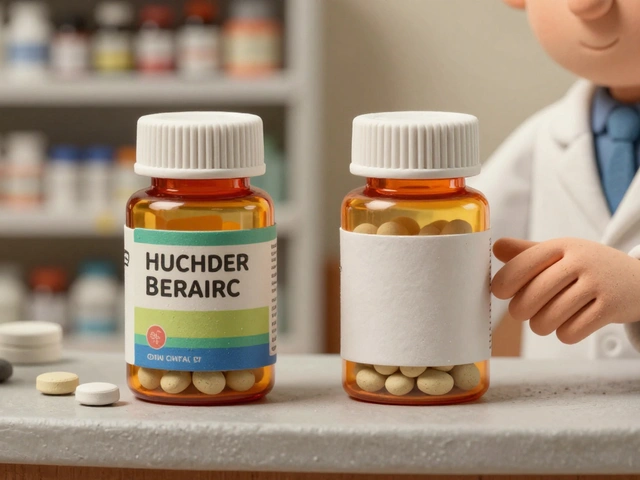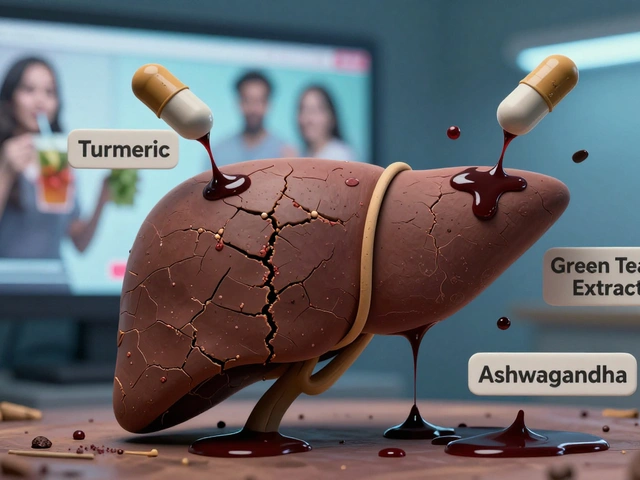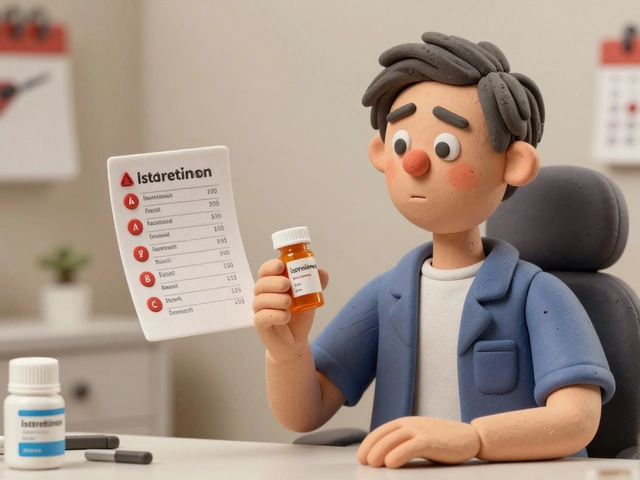For many people with end-stage kidney disease, dialysis isn’t just a medical procedure-it’s a lifestyle. And for those who choose home hemodialysis, that lifestyle can be more flexible, more controlled, and often more effective than the traditional three-times-a-week clinic visits. But it’s not as simple as just moving the machine from the hospital to the living room. Home hemodialysis requires serious preparation, a reliable support system, and a clear understanding of what to expect. This isn’t a quick fix. It’s a long-term commitment that changes how you live, sleep, eat, and even relate to the people around you.
What Home Hemodialysis Actually Looks Like
Home hemodialysis means doing your dialysis treatments in your own home instead of a clinic. The machines are smaller than they used to be, and many are designed for home use. But they still need clean water, steady electricity, and a dedicated space. Most setups require a 6-by-6-foot area near a drain and a dedicated 120-volt, 20-amp electrical circuit. You’ll also need a reverse osmosis water system to purify the water used in dialysis. Monthly water tests, chemical checks, and machine disinfection logs aren’t optional-they’re required by law.Unlike in-center dialysis, where staff handle everything, you or your care partner must set up the machine, prime the lines, insert needles into your vascular access, monitor the treatment, and shut everything down safely. That sounds intimidating, but with proper training, it becomes routine. Many people say the hardest part isn’t the machine-it’s learning to needle themselves. Self-needling is a skill that takes practice, and about 45% of trainees find it the most stressful part of the process.
Training Isn’t a One-Size-Fits-All Process
Training for home hemodialysis can take anywhere from three weeks to three months. It’s not just about learning how to operate the machine. You’ll spend hours learning how to:- Check your blood pressure before, during, and after treatment
- Calculate your fluid removal goals based on weight and diet
- Manage your supplies-ordering, storing, and rotating them so nothing expires
- Recognize and respond to alarms and complications like low blood pressure or air in the lines
- Keep accurate treatment logs for your care team
Most programs require 20 to 30 supervised sessions before you’re cleared to go home. Medicare covers up to 25 training sessions, which helps make this more affordable. But the real difference comes from how the training is delivered. Centers that use virtual reality simulators for needle practice, like the one at the University of Washington, report 92% competency rates-much higher than the 78% seen with traditional methods.
And you’re not alone in this. Every patient must have a trained care partner. This person learns everything you learn. They help with setup, watch for problems, and are ready to call for help if something goes wrong. In fact, most programs require that you never dialyze alone. That means if you don’t have someone reliable to help-like a spouse, adult child, or close friend-you likely won’t qualify. About 30% of potential candidates are turned away simply because they lack a care partner.

Your Schedule Is Yours to Control
One of the biggest advantages of home hemodialysis is schedule freedom. You’re not tied to a clinic’s hours. You can dialyze in the morning, late at night, or even while you sleep. There are three main schedules:- Conventional home hemodialysis: Three times a week, 3-4 hours per session. This looks similar to in-center dialysis but lets you choose the time.
- Short daily home hemodialysis: Five to seven times a week, 2-3 hours per session. This is the most common frequent schedule. Studies show it lowers mortality risk by 28% compared to in-center dialysis and helps control blood pressure better.
- Nocturnal home hemodialysis: Three to seven nights a week, 6-10 hours while you sleep. This gentle, slow treatment removes more toxins and fluids, cutting phosphate levels by 42% compared to conventional dialysis. Many patients reduce or even stop phosphate binders.
People on frequent or nocturnal schedules often report feeling more energetic, sleeping better, and needing fewer medications. One study found patients on short daily dialysis had 37% higher quality-of-life scores than those in clinics. They also had fewer hospital visits and less heart strain.
Outcomes Are Better-But Only If You Stick With It
The data doesn’t lie. People on home hemodialysis live longer. According to the U.S. Renal Data System, home hemodialysis patients have a 15-20% lower death rate than those who stick with in-center treatments. But that advantage shrinks if you’re only doing three sessions a week. The real benefit comes with frequency and duration.That’s why experts like Dr. Steven Weisbord from the University of Pittsburgh say the biggest predictor of success isn’t technical skill-it’s psychological readiness. Are you mentally prepared to take charge of your care? Do you have emotional support? Do you feel comfortable handling emergencies?
Real-world feedback backs this up. On patient forums, 87% of long-term home dialysis users say their quality of life improved. But 63% admit they were terrified during the first few months. Machine alarms, supply shortages, and care partner stress are common complaints. One Reddit survey found 41% of users experienced tension with their care partners, especially when the demands of daily treatment started to feel overwhelming.

Barriers Still Exist-Even With Better Tech
Despite the benefits, home hemodialysis isn’t widely available. Only 12% of U.S. dialysis centers offer training programs. In some areas, you might have to travel hundreds of miles to get started. And even if you find a program, staff shortages are a problem. A 2022 survey found 71% of nephrologists say they don’t have enough trained staff to expand home dialysis.Reimbursement is another hurdle. Medicare pays for training and equipment, but not always enough to cover the staff time needed to properly train and support patients. That’s why some centers cut corners-offering rushed training that leaves patients unprepared.
Technology is helping. Portable machines like the NxStage System One make travel easier. New devices like the WavelinQ endoAVF system, approved in 2022, create better vascular access with less surgery. And starting in 2025, Medicare will tie payments to patient outcomes, not just location. That change could push more centers to invest in home dialysis programs.
Is Home Hemodialysis Right for You?
It’s not for everyone. You need:- A reliable care partner who’s willing to learn and help every day
- Space in your home for equipment and supplies
- Good physical and mental health to manage the routine
- Access to a certified home dialysis program
- Willingness to follow strict water, hygiene, and record-keeping rules
If you meet these criteria, home hemodialysis can give you back control. You’ll save up to 10 hours a week by skipping clinic trips. You’ll have more energy. You might sleep better. You could live longer. But it’s not easy. It demands discipline, communication, and resilience.
Ask yourself: Are you ready to be your own healthcare team? If the answer is yes, then home hemodialysis might be the best choice you’ve ever made for your kidneys-and your life.
Can you do home hemodialysis alone?
In nearly all cases, no. Most programs require a trained care partner to be present during every treatment. Solo home hemodialysis is possible with special equipment and extra training, but it’s rare and not recommended for most people. The risk of complications-like low blood pressure, bleeding, or machine errors-is too high without someone nearby to help.
How long does home hemodialysis training take?
Training typically lasts between 3 and 8 weeks, depending on your learning pace and the program. Some people finish in 3 weeks if they’ve already practiced self-needling at the clinic. Others take up to 12 weeks, especially if they need extra help with physical or cognitive tasks. Medicare covers up to 25 training sessions, which usually covers the full process.
What’s the difference between short daily and nocturnal home dialysis?
Short daily dialysis happens during the day, five to seven times a week for 2-3 hours each session. It’s great for better blood pressure control and energy levels. Nocturnal dialysis happens while you sleep, three to seven nights a week for 6-10 hours. It’s gentler and removes more toxins, especially phosphorus, which means fewer phosphate binders and less heart strain. Both are more effective than conventional dialysis, but nocturnal requires a quieter home environment and good sleep habits.
Do you need special plumbing for home hemodialysis?
Yes. You need a dedicated water line with 40-80 psi pressure and a drain line that can handle the waste fluid. Most homes can be modified with a plumber’s help. You’ll also need a reverse osmosis system to purify the water, which connects to your water line and requires monthly testing to meet safety standards.
Is home hemodialysis cheaper than in-center dialysis?
Medicare covers the same costs for both home and in-center dialysis, so there’s no direct cost difference. But home dialysis can save you money indirectly-less travel, fewer hospital visits, and reduced medication use (especially phosphate binders). Some patients save hundreds of dollars a month on transportation and meals. The real savings, though, are in time and quality of life.
Can you travel with a home hemodialysis machine?
It depends on the machine. Standard home dialysis units are not portable. If you travel, you must arrange treatments at a clinic near your destination. But portable systems like the NxStage System One can be taken on trips. You’ll need to plan ahead-arrange water delivery, power sources, and local support. Many patients do it successfully, but it requires coordination and patience.
What happens if the machine breaks down?
Every home dialysis program provides a backup plan. You’ll get a contact number for 24/7 technical support. Most machines have diagnostic tools that guide you through simple fixes. If the machine can’t be repaired quickly, you’ll be directed to a nearby clinic for an emergency session. It’s rare for a breakdown to be life-threatening if you’ve been trained properly and have a care partner.
How do you know if you’re ready for home hemodialysis?
Your care team will assess your physical ability, mental readiness, and social support. You’ll need to demonstrate you can handle the equipment, follow safety steps, and recognize warning signs. Most programs require you to pass written and hands-on tests. But the real test is this: Can you stay calm under pressure? Do you have someone who will help you every day? If the answer is yes, you’re likely ready.







Deb McLachlin
Home hemodialysis is a profound shift in chronic disease management, not merely a logistical adjustment. The data on mortality reduction is compelling, particularly with frequent and nocturnal regimens. What’s often underemphasized is the cognitive load required to maintain rigorous hygiene protocols, fluid balance tracking, and equipment maintenance over years. The psychological toll of constant vigilance cannot be overstated. Many patients report a sense of empowerment, but that empowerment is hard-won and sustained only through disciplined systems. The requirement for a care partner isn’t bureaucratic-it’s existential. Without that second set of eyes and hands, the margin for error becomes lethal.
saurabh lamba
lol so basically you pay for a machine and then become its slave 😅
Kiran Mandavkar
One must ask: is this medical advancement or a neoliberal fantasy of self-sufficiency masquerading as care? The system offloads the burden of life-sustaining treatment onto the vulnerable-families, spouses, the under-resourced-while corporate entities profit from equipment sales and pharmaceuticals. The rhetoric of ‘empowerment’ is a veneer. This isn’t freedom-it’s privatized suffering dressed in clinical jargon. The 15–20% mortality reduction? Fine. But at what moral cost to the caregiver? Who audits their burnout?
Shannon Hale
Let me be crystal clear-this isn’t for the weak-willed or the disorganized. I’ve seen patients who thought they could wing it. They couldn’t. They ended up in the ER with air embolisms because they skipped the priming checklist. If you’re not willing to treat this like a high-stakes surgical procedure every single day, don’t even start. The machines don’t care if you’re tired. The alarms don’t pause for your mood. And your care partner? They’re not your therapist-they’re your backup oxygen mask.
Bill Machi
Interesting how this whole system depends on American infrastructure-reliable electricity, clean water, plumbing standards. In a country where 1 in 5 households can’t afford their insulin, how many of these patients are actually able to maintain this? It’s a luxury solution wrapped in medical necessity. The government pays for the machine, but not for the 3 a.m. panic attacks, not for the marriage that crumbles under the weight of nightly dialysis, not for the lost jobs because you can’t work when you’re drained after a 7-hour session. This isn’t progress-it’s a band-aid on a broken system.
Elia DOnald Maluleke
One must contemplate the ontological shift: from patient to technician. The body becomes a system to be managed, the machine a cohabitant. The silence of the nocturnal dialysis-rhythmic, mechanical, unyielding-becomes the new lullaby. One wonders: when the machine hums through the night, who is truly in control? The human? Or the algorithm that calculates fluid removal with cold precision? The dignity of autonomy is real-but so is the erosion of the self when one’s existence is reduced to a series of logged metrics and alarm responses.
satya pradeep
Been doing home dialysis for 3 years now. Self needling? Yeah it sucked at first. Took me 6 weeks to not cry every time. Now I do it while watching Netflix. My wife handles the machine setup. We have a backup power unit and extra supplies in the garage. Water test every month? Annoying but worth it. Biggest win? No more 4am clinic rides. I sleep till 7 now. And my BP is stable. If you got a good partner and don’t mind being a little OCD about cleanliness-go for it. But don’t underestimate the mental game.
Prem Hungry
To anyone considering this: you are stronger than you think. I was terrified too. My hands shook the first time I touched the needle. But training gave me structure. The VR simulator helped me visualize the vein-made it less scary. My son learned everything with me. We turned it into a team sport. Now we laugh about the time the alarm went off at 2 a.m. and we both jumped out of bed like it was a fire drill. It’s hard-but it’s ours. And that makes all the difference.
Leslie Douglas-Churchwell
EVERYTHING IS A CONTROLLED EXPERIMENT. The water system? Tainted by municipal fluoridation conspiracies. The reverse osmosis filters? Likely seeded with microchips by Big Pharma to track your vitals. The ‘care partner’ requirement? That’s not safety-it’s social engineering. They want you dependent on someone so they can monitor your emotional compliance. And don’t get me started on the ‘training sessions’-those are just indoctrination modules disguised as education. They’re conditioning you to accept this as normal. Wake up. This isn’t medicine. It’s surveillance capitalism with IV lines.
shubham seth
Let’s cut the rose-tinted glass. Yes, survival rates are better. But the quality-of-life metrics are cherry-picked. Who tracks the spouses who develop PTSD from nightly emergencies? Who measures the depression rates in patients who can’t travel because their machine won’t fit in the car? And the 41% partner tension statistic? That’s not ‘stress’-that’s resentment festering under the guise of ‘care.’ This system rewards the resilient and punishes the vulnerable. The real tragedy isn’t kidney failure-it’s turning love into a clinical protocol.
Kyle Swatt
I’ve sat with patients who’ve done this for a decade. The ones who thrive? They don’t see it as a chore. They see it as their rhythm. The machine becomes part of the household like a coffee maker. The alarms? Just background noise. The needle? Just another tool. But it takes time. Not weeks. Months. Years. And it’s not about being tough. It’s about finding a way to live with the noise inside your head and the hum outside your body. You don’t conquer this. You learn to dance with it.
Eric Healy
So you’re telling me I gotta turn my living room into a medical facility, learn to inject myself, and rely on my wife to watch me while I sleep? And if I mess up? I die. Cool. Thanks for the life plan. Meanwhile my neighbor’s getting a transplant next month. Guess I’ll just keep paying for this fancy IV drip. At least he gets to sleep through the night.
Kelsey Robertson
Of course it’s better-because it’s more inconvenient. More responsibility. More stress. More paperwork. More fear. More isolation. More dependence. More guilt. More sleepless nights. More arguments. More ‘I’m sorry’ texts. More ‘I can’t do this anymore.’ More ‘I didn’t mean to yell.’ More ‘I just need a break.’ And you call this progress? It’s not better-it’s just louder.
Joseph Townsend
I’ve watched my brother do this for five years. The first time he bled through the sleeve of his shirt? I thought he was dying. He laughed. Said it was just a nick. That’s the thing-this isn’t about machines or schedules. It’s about how you respond when your body betrays you every single day. He doesn’t talk about it. But I see it. The way he stares at the ceiling at 3 a.m. The way he hugs his daughter a little tighter before she leaves for school. This isn’t treatment. It’s a quiet kind of heroism. And nobody writes poems about it.
kora ortiz
You got this. I was scared too. But every time you prime the lines, you’re choosing life. Every time you log the numbers, you’re claiming your power. Every time your partner holds your hand during the treatment, you’re building a legacy of courage. This isn’t just dialysis-it’s your daily act of rebellion against despair. Keep going. You’re not just surviving. You’re thriving.